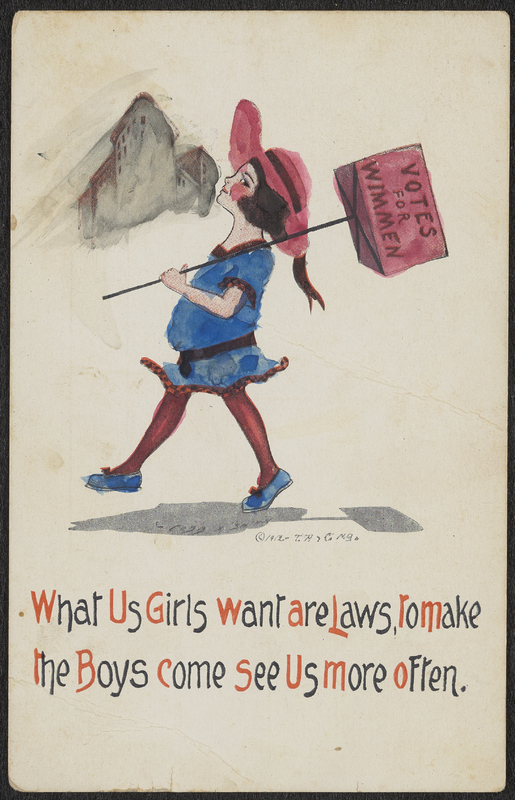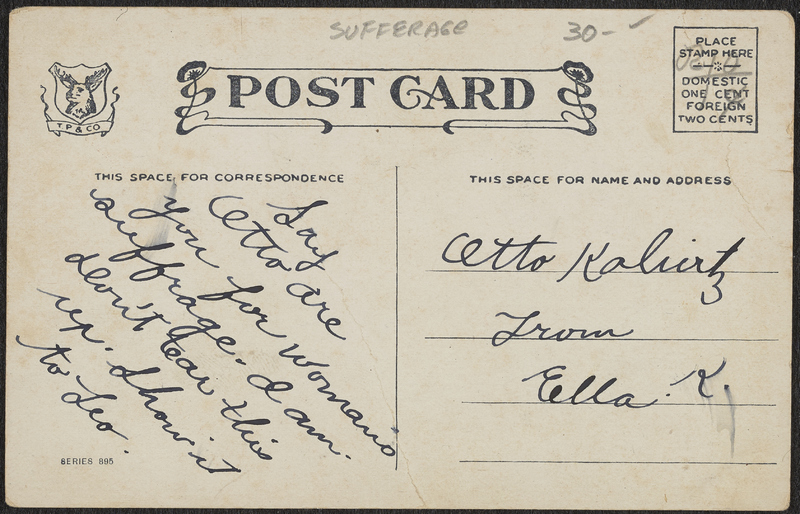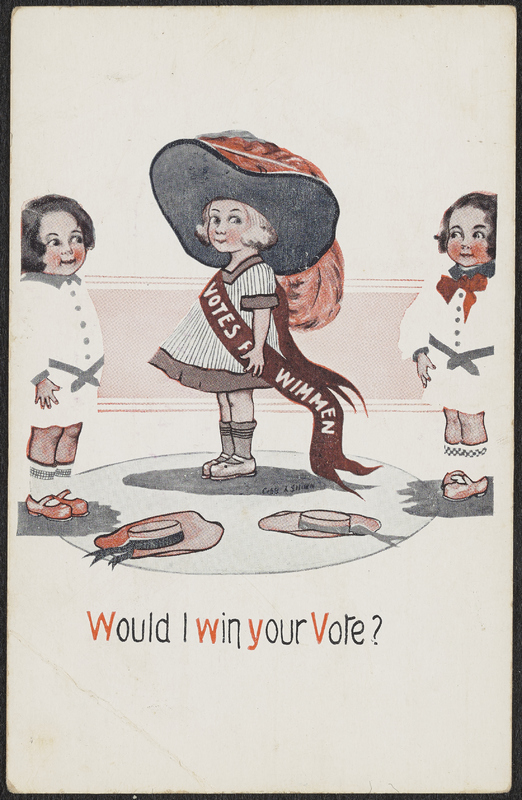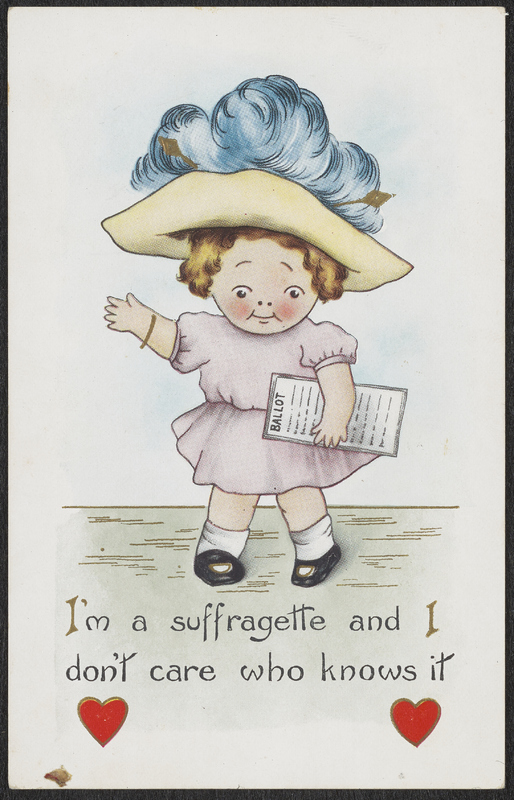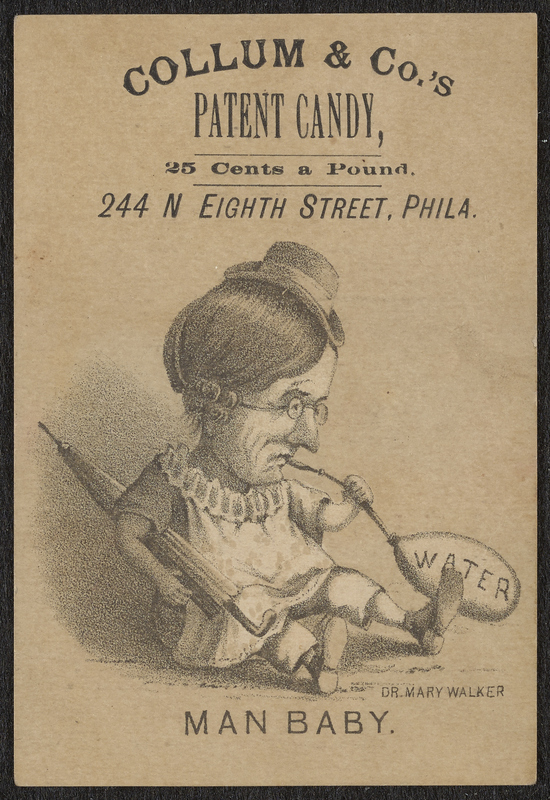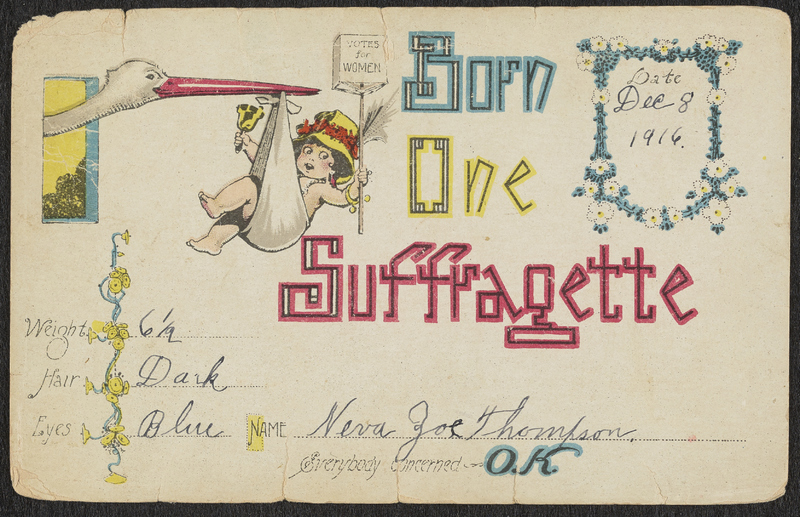Children as Symbols
“Votes for Women” was a heated topic in America during the 19th and 20th centuries. Women started to actively fight for their rights by parading on the street and attending regular meetings held by women’s suffrage organizations. The actions taken by women finally led to the creation of the 19th amendment, a significant mark in American history. However, the 19th amendment only provided us with the result of the suffrage movement. It did not present the daily struggle experienced by each woman. Postcards, on the other hand, give us a more concrete description of the role suffrage movements played in daily lives. Children were a popular subject for postcards, and they were often used as symbols to advocate either for the suffrage cause or against it.
Why were children popular subjects for suffrage postcards? There are mainly three reasons for the presence of children, especially baby girls, on postcards: They are cute characters for commercial postcards; they represent nature and purity, as unaffected by society; and they remind parents of their own children and strengthen the card’s persuasive power.
On some postcards, suffragettes are represented as mothers who have abandoned their children. This played into the fear that traditional gender roles would be reversed or shattered once women gained the right to vote. On other postcards, images of children were used to represent suffragettes. Anti-suffrage cards presented women as needy, aggressive, or submissive babies; while pro-suffrage cards portrayed women as innocent children who should enjoy voting as a birthright. These postcards, used daily and by many, thus captured the dramatic changes happening in the US against a backdrop of a growing women's suffrage movement.
Olivia Wang, Valerie Xu, and Jaylene Yi, curators
